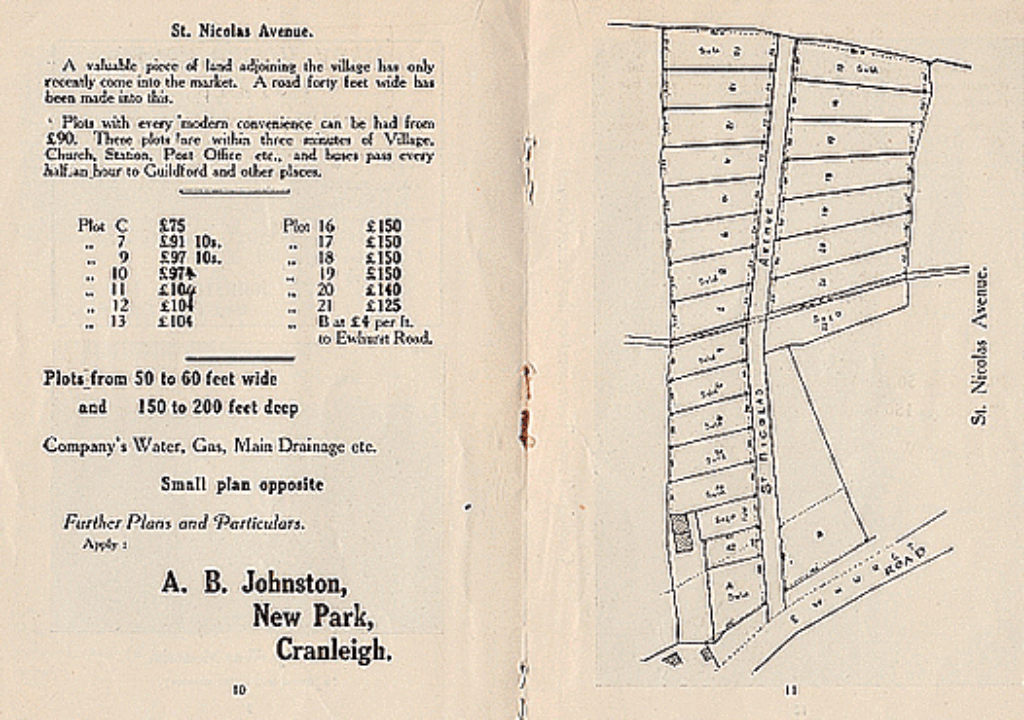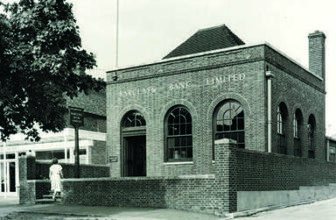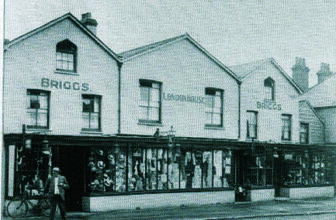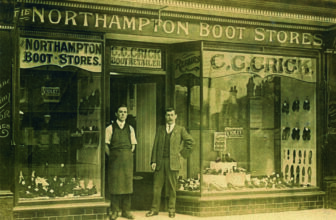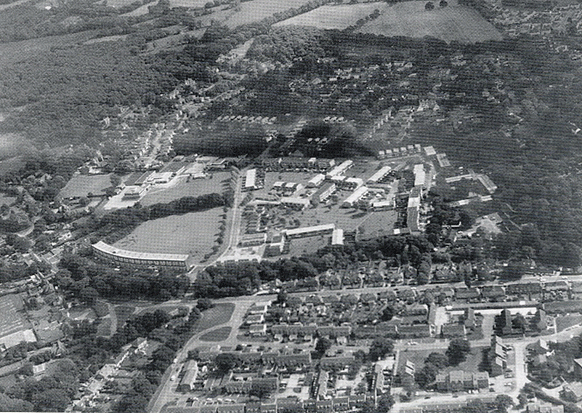
by Joy Horn
Main Photo: Aerial view in the 1960s of the earliest houses built on Summerlands (first called ‘Nuthurst’ estate), with Park Mead estate
This walk starts at the junction of Ewhurst Road and St Nicolas Avenue. It is about just over one mile long, and is largely level, with occasional benches.
‘Avenue’ means a tree-lined road, and as you turn into St Nicolas Avenue, you will notice that not many trees are left now. The houses here were mostly built in the 1930s. It formed part of the former glebe land, for centuries held by the parish church, and this area was known as Rectory or Parsonage Farm, with the farm buildings situated behind the first houses on the left. There was a big fire here in 1922, and instead of restoring the damaged buildings, the farmland was sold for housing.
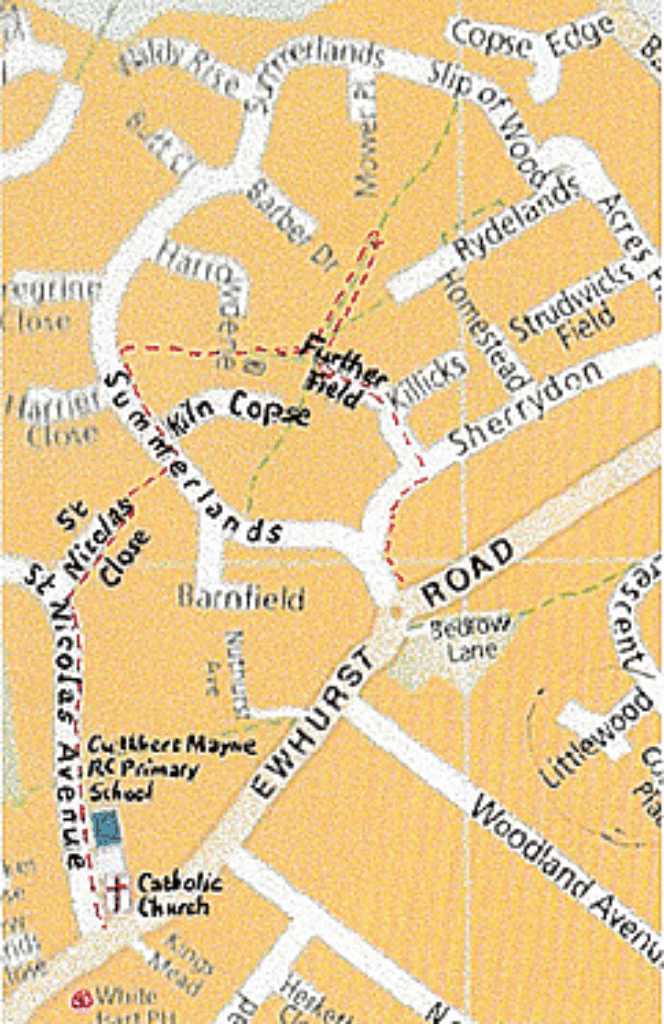
The developer sold the individual plots (and they were different sizes and prices), and the purchaser had a house built to his own requirements. Built with plenty of space around them, now almost every house has built extensions to the limit of their property or means.
Across Ewhurst Road from St Nicolas Avenue, on the site of Brookside, was the building firm of Auchterlonie & Reeves, well placed for building at least some of the houses here. The quality house called Concord, on the left next to the cemetery footpath, was put up by one of the directors of the firm, James Reeves, as his own home.
On the right, St Cuthbert Mayne’s school hall (with a cross on top) was in 1933 the first purpose-built Catholic church in Cranleigh. The present large church was built in the 1960s on former allotments, largely through the dynamism of Father Francis von Weyhrother, the priest from the Netherlands, always known as ‘Father Von’.
Go along the road to St Nicolas Close on the right. St Nicolas Avenue used to end at this point, with a farm gate and farm meadows beyond it, until the Glebelands estate was built in the 1950s, when the roads were linked up.
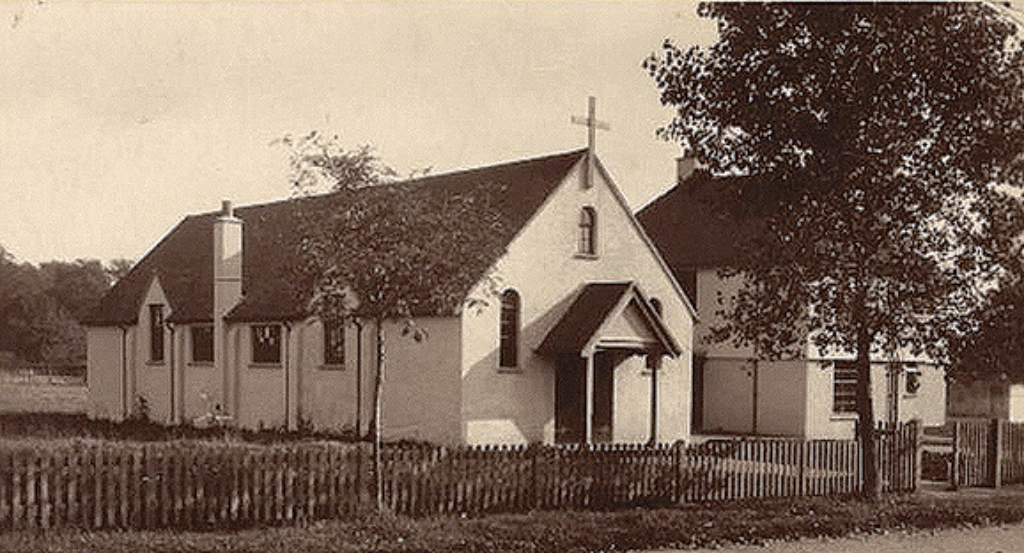
Walk along St Nicolas Close and through the alley into the Summerlands estate, built in the 1970s. This large development took its name from the house called ‘Summerland’ (in the singular) of Captain Percy Butt, who formerly owned and farmed the land. A local man described how as a boy he used to help herd the cattle to the abattoir in Ewhurst Road (now part of Cranleigh Funerals), next door to Lade’s the butchers. Cranleigh swimming pool owes a great debt of gratitude to Capt. Butt for a large gift towards its building in 1970.
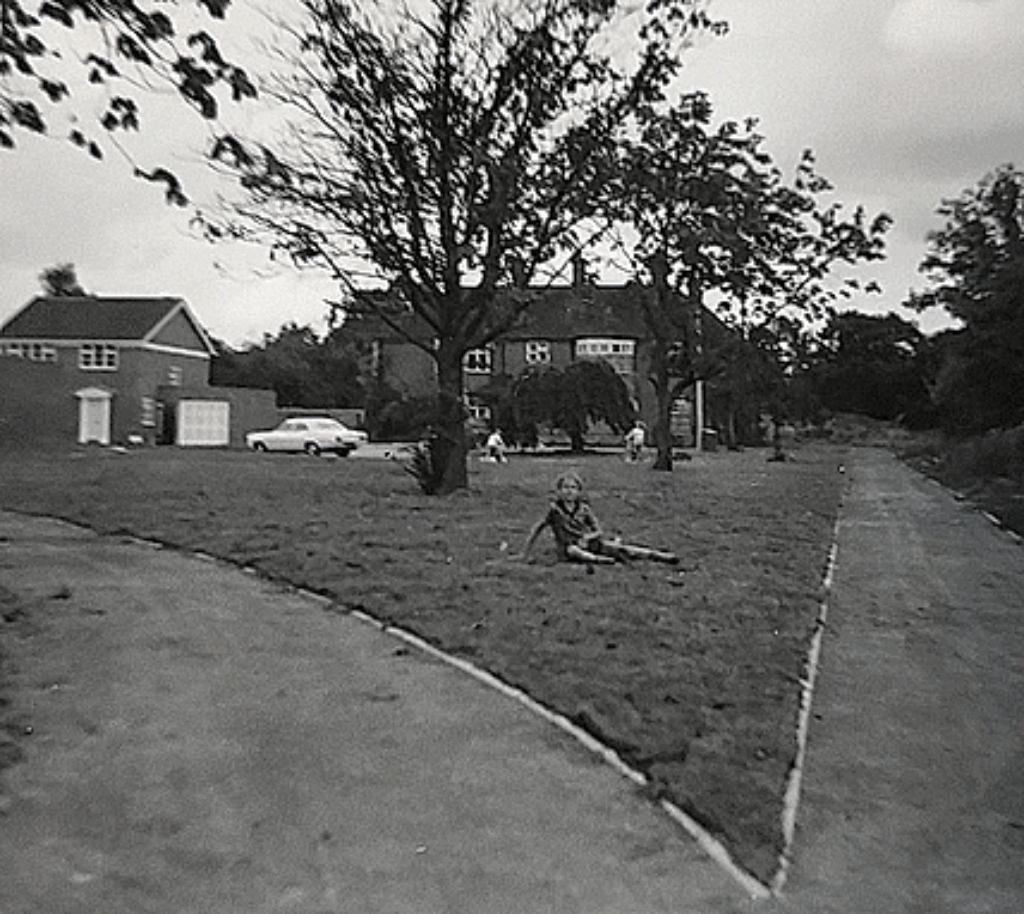
One feature you will notice is that Summerlands has numbers for almost all its houses, rather than names. This may be because Hambledon Rural District Council (which used to include Cranleigh) decided in 1982 that residential roads should be numbered, because of postal and delivery problems, and allocated numbers for all houses. New houses were more likely to adopt numbers, than old houses were to discard their names.
Summerlands was planned with plenty of open spaces and woodland. Several of its road names have historical sources. Cross the road and go left about 100 yards, beyond Kiln Copse, to a marked footpath on the right leading to the conservation pond, originally Capt. Butt’s trout pool. Go right to the information board, checking whether there are currently any resident moorhens. After circling the pond, follow the path to the big open space and make for the entrance to the copse – another great asset for the estate.
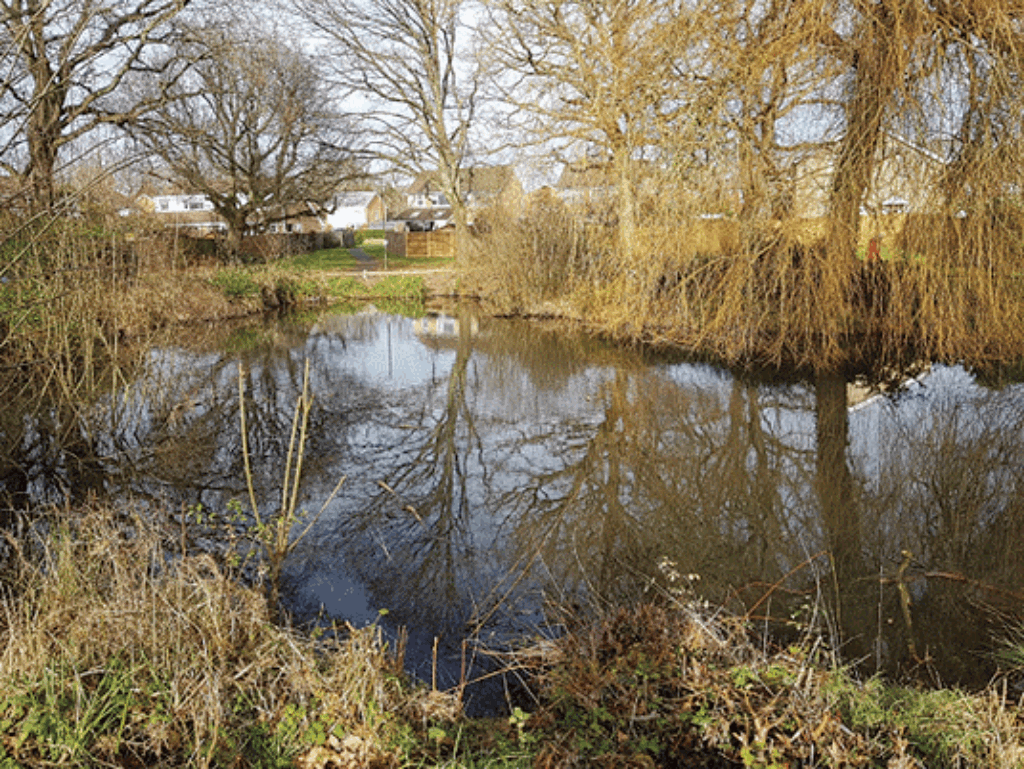
Two hundred years ago 23 farms in Cranleigh had a kiln somewhere in their fields. This was for burning lime to improve the unproductive clay soil. A Cranleigh man is said to have discovered the value of this lime treatment, and there is a plaque to him on the outside south wall of the parish church.
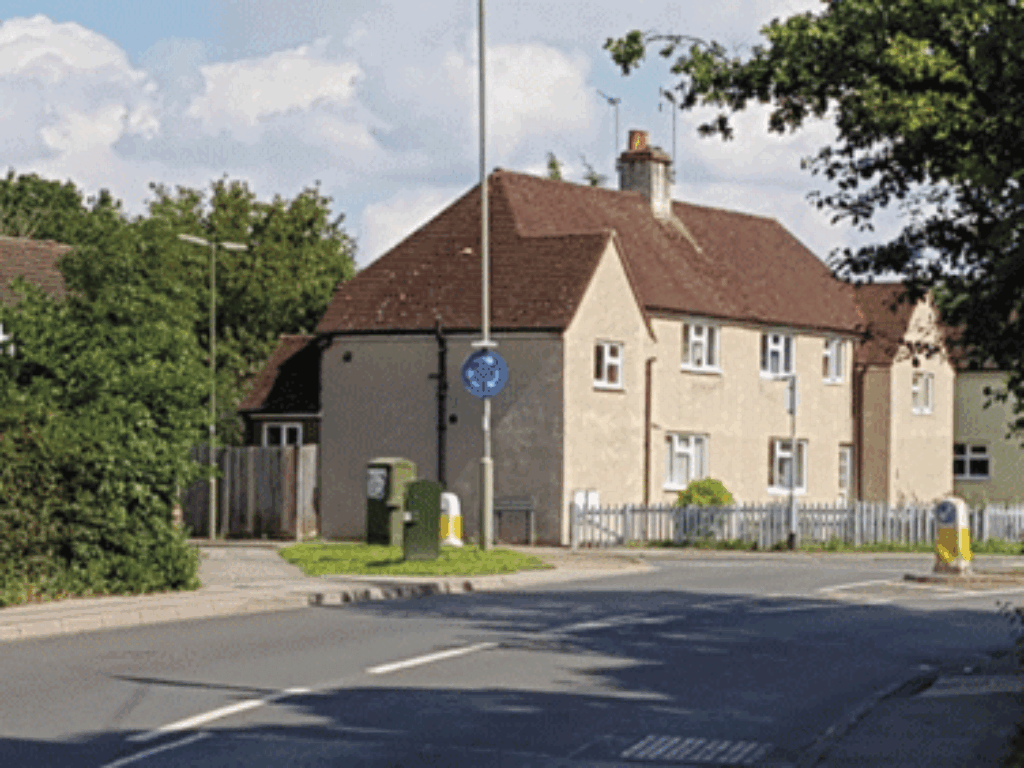
After sampling the copse, return the same way, and take a footpath on the left by the litter bin to the road called Furtherfield – which was a fieldname on a map of 1842. Here you can see a large disused building called Longfield (another fieldname in 1842), opened in 1975 as a home for senior citizens, empty since 2015. Continue by turning right into Sherrydon (the first road built on this estate), then left into Summerlands to reach Ewhurst Road.
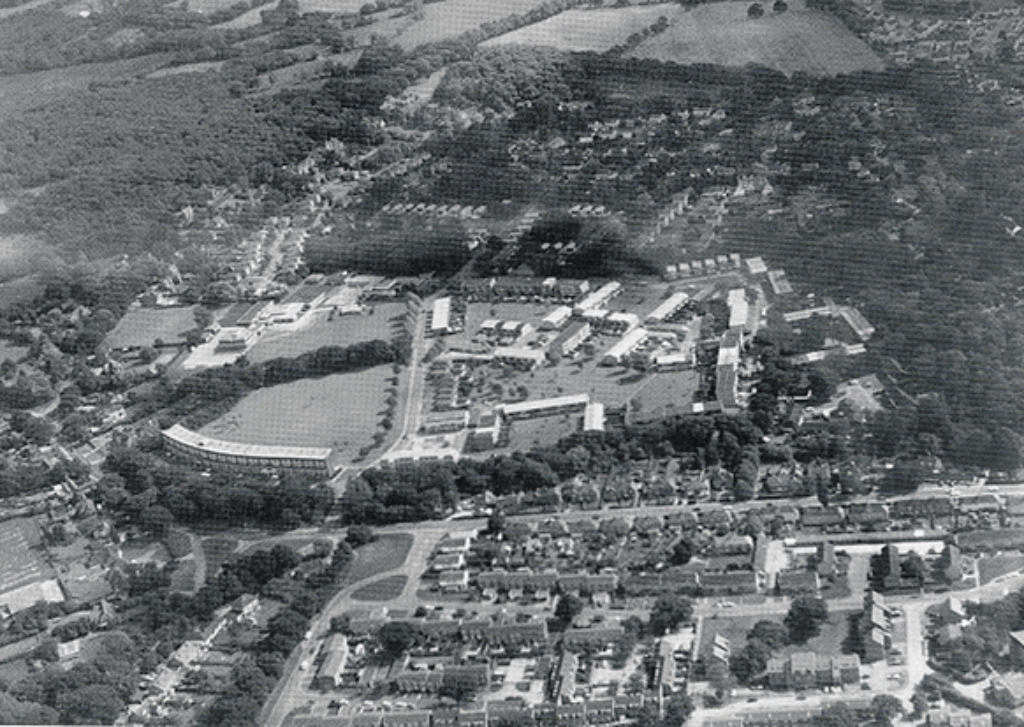
We finish with some of Cranleigh’s ‘homes for heroes’, promised to the nation by Prime Minister David Lloyd-George at the end of the First World War. The twenty Parkhouse Cottages were built in the 1920s as reasonably-priced rentable housing. They were named after Parkhouse Farm at the junction of Ewhurst Road and Barhatch Road, although they were generally referred to as ‘the council houses’. They were well-built homes, with good-sized gardens, and of course each of them had its own indoor bathroom and toilet. Such a contrast to the basic houses, with their outdoor loos, built before the War! Two of them (numbers 3-4) had to be demolished for access to the Summerlands estate when it was built on the fields behind them.
From Ewhurst Road there are options of buses in either direction, or refreshments at the White Hart or Moooh icecream shop.
The Cranleigh History Society meets on the second Thursday of each month at 8pm in the Band Room.
The next meeting is on Thursday October 12th, when Philip Gorton, Trevor Dale and Michael Miller will speak on ‘Old Cottage Hospital’. Visitors are welcome.

